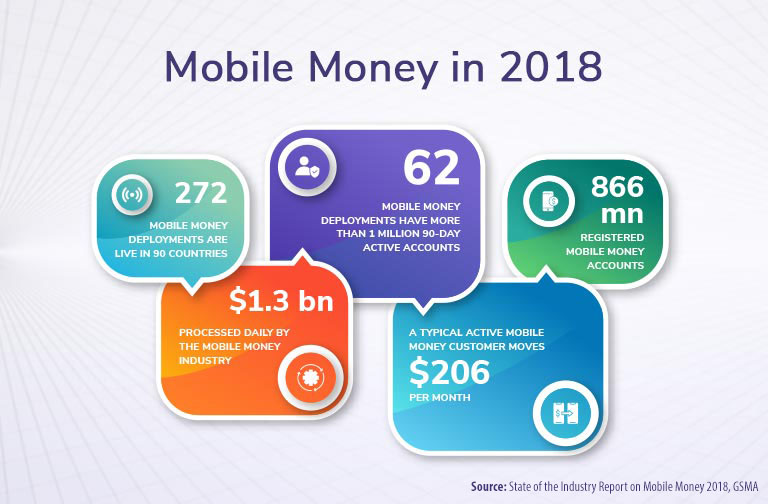Gone are the days when carrying out banking transactions meant standing in long queues during the designated hours at the nearest bank branch. Banking services such as bill payments, money transfers, remittances, beneficiary management, balance checks, availability of financial products and much more do not take more than a few taps on the touchscreen of your smartphone.
But how did it all start? Well, SMS Banking essentially laid the foundation of mobile financial services more than 2 decades ago and it was followed by the introduction of mobile banking on the Wireless Application Protocol (WAP) that was first offered by some European banks in 1999. The first fully functional banking application was launched by RBS for the iPhone in May 2011, and its Blackberry and Android versions followed suit. Soon after, mobile banking applications became a permanent fixture for banks and now these apps have helped cut down bank visits to an absolute minimum.

Mobile financial services have already become an inseparable part of smartphone owners’ lives, what with a plethora of services being made available at their fingertips! While these largely cater to our financial needs, the scope of improvement continues to drive the sector to open new avenues in the fintech sector. The year 2020 holds a lot of promise for the mobile finance solutions industry and you might want to watch out for these emerging trends that may change the course of the industry as we know it.
Mobile Financial Services Trends for 2020 & Beyond
Blockchain Adoption
The immutable and completely secured blockchain technology has the potential to change the way payments are made by mobile devices. Blockchain features like decentralization, node distribution and asymmetric encryption can improve the security of mobile payments as transactions can be monitored by all the participants in real time. Crypto contracts or smart contracts based on blockchain will be used between banks and financial institutions to set regulations and ensure complete adherence to those regulations to eliminate the possibility of frauds by a large extent. We may also witness a rise in the trend of converting cryptocurrencies to cash in the year 2020.
Growth of Neobanking
Neobanking is not a new concept anymore. We have already seen the rise and success of a number of neobanks, especially in Europe, but the concept of the digital-only bank is still in the nascent stage. Its full-fledged introduction and acceptance in the rest of the world is a possibility in 2020. According to The Growth of Digital Banking Report by Caci, the number of people using mobile financial services and dedicated banking applications will be more than the people who visit branches to use banking facilities by 2021. It says that the percentage of customers using app banking will reach 71% by 2024. Meanwhile, the number of people visiting bank branches will steadily decline to 55%. Neobanks have a lot to benefit from this trend.
Rise in Consumer Analytics
With the advent of digital financial solutions and mobile money services, banks, financial institutions and fintech companies are privy to consumer data which was not easily available in the past. The spending patterns of their customers and detailed analytics of consumer behavior that can easily be bifurcated by different criteria such as demographics, region, gender, education, income and much more, can be assessed to give personalized services to customers. It is easier to figure out what consumers want, by analyzing what they do and deriving actionable insights from the collected data. Along with improving their financial products, banks and other financial institutions can also use consumer analytics to target the right people for their different products and services.
Artificial Intelligence
Artificial Intelligence (AI) has a proven track record of mitigating risks and helping companies reduce their operating costs. The implementation of this technology in mobile financial services can have far-reaching effects in fraud detection, spotting unusual behavior or unethical trading. Additionally, 2020 can be the year when banks incorporate AI-based chatbots into their mobile applications that can assist customers while using mobile financial services.
Accelerating Women’s Financial Inclusion
The wide-spread availability of mobile financial services as well as other models such as agency banking have helped drive financial inclusion in underdeveloped and developing countries, but the picture looks bleak when it comes to the women in these countries. 2020 has the potential to be the year that changes this scenario. The advancements in the mobile financial sector and the ease of use of these services can play an important role in bringing more and more women within the financial spectrum.
Read Also
Todays & Tomorrows of Mobile Payments
Digital-only Banks: Creating a Niche in the Banking Sector
Panamax Rolls Out A New Version of Mobile Financial Services Platform
Conclusion
The year 2020 is likely to be a turning point for mobile financial services in more ways than one. With new advancements in the industry, and Blockchain and AI becoming commonplace, we can also expect a paradigm shift in the way fintech is leveraged by businesses as well as end customers. Looks like it is going to be an exciting year for the banking industry.


















